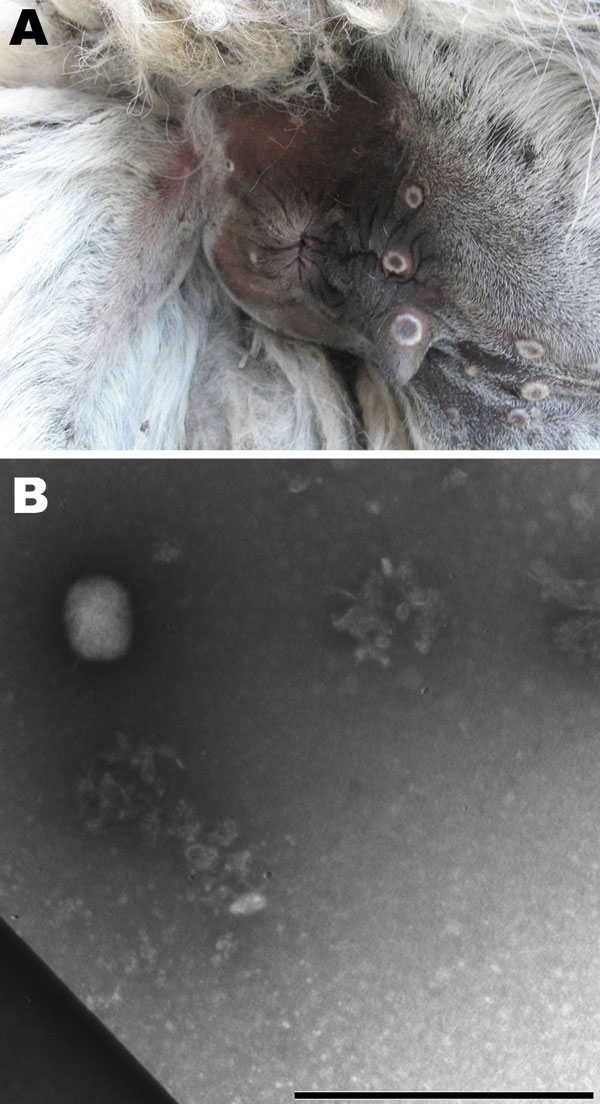Volume 17, Number 8—August 2011
Dispatch
Cowpox Virus in Llama, Italy
Figure 1

Figure 1. A) Skin lesions showing a crater morphologic appearance typical of poxvirus around the anus of a llama from a farm near Calcata (Viterbo) in Northern Latium, Italy. B) Electron micrography image of skin lesion sample showing negatively stained brick viral particle of ≈160–220 nm, consistent with orthopoxvirus. Scale bar = 1 µm.
Page created: August 15, 2011
Page updated: August 15, 2011
Page reviewed: August 15, 2011
The conclusions, findings, and opinions expressed by authors contributing to this journal do not necessarily reflect the official position of the U.S. Department of Health and Human Services, the Public Health Service, the Centers for Disease Control and Prevention, or the authors' affiliated institutions. Use of trade names is for identification only and does not imply endorsement by any of the groups named above.